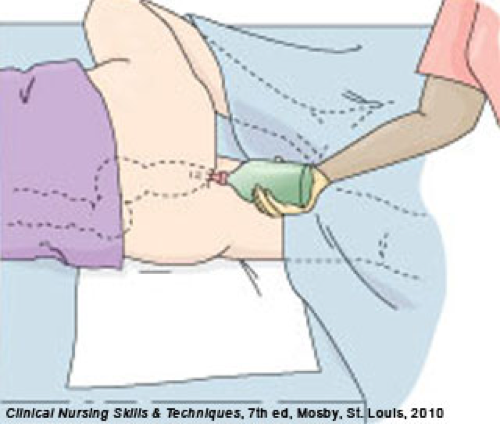
An enema involves delivering a fluid solution into a person’s rectum to:
Tests and Surgery
Cleansing of the bowel offers a clear view of the lining of the intestine during a diagnostic test. Cleansing also prevents the leakage of stool during surgery.
Constipation
Constipation is difficulty having a bowel movement for at least 3 days. A person strains and often is not able to have a bowel movement at will. A stool is very hard when a person has constipation. An enema allows a person to pass a hardened stool more easily.
Impaction
If an enema does not work, the person you provide care for may have an impaction, a collection of hardened stool wedged in the rectum. The stool is too large to pass through the rectum. Impaction often occurs from unrelieved constipation. If an enema does not have the expected results, call the person’s doctor for further instructions.
This lesson will review how to give an enema safely and what to look for to be sure the enema works the right way.